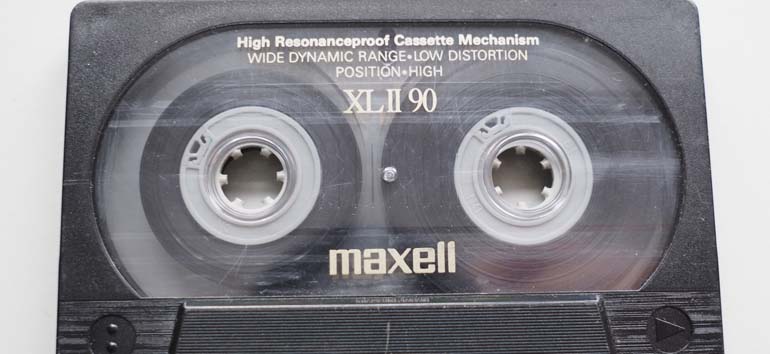Sign up for the Family Tree Newsletter! Plus, you’ll receive our 10 Essential Genealogy Research Forms PDF as a special thank you.
Get Your Free Genealogy Forms
"*" indicates required fields

Here’s a confession; I love gadgets. If you’ve ever wondered who in the world needs all of these fancy tools to be productive, it’s me. If it’s shiny and needs to be charged, I probably want it. When I’m working on my genealogical research, though, my most useful tool doesn’t have a cord, an extended warranty or a hefty price tag. The one tool I’d be lost without is my genealogy research log.
When I was a brand-new genealogist, more seasoned researchers told me I needed a log, and I scoffed. Then I spent years doing the same work over and over, because I wasn’t keeping track of my efforts. Now I face far fewer brick walls because I’m able to move my research forward instead of going around in circles.
Research logs help you see what you’ve done, what you need to do and where to go next. If you take a break from your research for a few months (or years), you’ll be able to pick up where you left off. These days, I never do any genealogical work without my research log.
In the olden days (1995), my research log was on paper. With today’s technological advances, I think a research log is more useful if it’s electronic, but pen and paper are always an option. A computer-based research log is easy to find, and you can add to it forever. It doesn’t waste paper or printer ink, and modern automatic backup systems and cloud-based storage can help ensure that it’s available even if disaster strikes.
I use Evernote because it’s available on all of my gadgets and backs up in the cloud. However, even a Word document can be an effective research log. The platform isn’t important; the discipline of recording all of your research is what matters most.
I encourage you to overcome the idea that a research log is too much work. Once you’re past the learning curve of a new system, your log saves valuable time better spent breaking down your brick walls and finding new ancestors to add to your family tree.
Make sure your genealogy research log includes these six key details:
1. Date of research
Captain Obvious, you say? A lot of people don’t realize how useful the date of research can be. New records are being digitized all the time, so assessing how long ago you looked for something and didn’t find it can help determine when it’s time to try again.
For example, my research logs from 2014 contained notes indicating that my ancestors’ church records in Norway weren’t available online. The date prompted me to try again. When I did, I was rewarded with two generations’ worth of new discoveries.
Dates can also help you spot patterns in your research cycle. You can choose when to subscribe to certain websites so you can pay for them when you’ll actually use them. My research logs tell me I tend to work on my own family tree more in the summer, when hot weather keeps me indoors with the air-conditioning. So I can budget for genealogy website subscriptions in the summer months, when I’ll get the most value for my dollars.
2. Full source citations
I know—source citations aren’t that much fun. You feel like they’ll slow you down, and you promise you’ll go back and do them later, right?
Odds are you won’t. Do your future self a favor and create source citations right then and there. Doing so will prevent that awful feeling when you realize at the end of a research trip that you don’t have a page number, author’s name or other key detail. You’ll also have everything ready for the day you write up your research conclusions (which increases the odds that you will do those write-ups).
I’ve also found that it’s easier to learn how to do citations quickly and correctly if you do one every few minutes. The quick repetition really helps your brain to learn a new skill.
3. Details, details, details
You think you’ll remember that exciting record forever, but odds are you won’t. When you’ve been working on your family trees for decades, you’ll be amazed at how quickly today’s research details fade from memory. Beyond the basic outline of what you find in a particular document, what else will you record? Does a witness name ring a bell? Does the document spur new ideas? Put all of it in your research log. There’s no such thing as too much information here.
If you’ve discovered a resource that might be handy later on, copy and paste the URL into your research log. By copying and pasting the URL you avoid introducing typos. That will allow you to come back to it with a single click.
4. Keywords that relate to the search
Your research log’s data is only useful if you can find it again. Many family historians struggle to find a digital filing system that works for them. Your filing system doesn’t have to be perfect, and this is where adding keywords can really help.
If you’re not yet sure of the spelling of a newly discovered ancestor’s name, add all of the spellings you can think of to cover your bases. For example, if you’re working on a woman whose maiden name is still a mystery, include text with her husband’s name, the town she lived in or other identifying details. This will save you from having to wade through every “Mary” on your computer when you’re looking for this Mary.
In some families, even full names aren’t that helpful. I have German ancestors who reused the same names over and over. My Norwegian forebears were worse; they used patronyms, which changed each generation.
In order to keep them straight, I’ve developed nicknames, and I tag each research log entry with the nickname. This helps me not confuse Milwaukee Fred with Railroad Fred or Dead Fred. (Of course, they’re all dead. But “Dead” Fred died very young, and had his name passed along to the next child—a common practice among Germans). I also have a string of Nels Nelsons, so Civil War Nels is labeled differently from Norway Nels (who lived in the Old Country) and Minnesota Nels (who was born in—you guessed it—Minnesota).
Some people use ancestor numbers assigned by their desktop genealogy software as unique keywords for each ancestor. Do whatever helps you find the right person.
5. Expenses
Your research log is a great place to keep track of costs when you send a request for a death certificate or pension file. Whether you’re on a strict budget or not, it’s smart to track your spending and to stay within bounds.
Recording those costs can also provide some accountability, so you don’t accidentally go on a late night record-ordering spree and blow your budget for the year in one fell swoop. (I’ve done that, and I don’t recommend it.) It’s helpful to look back and see how much a particular record cost the last time you ordered, so you can better prioritize what to order next.
6. Notes to your future self
If you’re researching records in a particular area, you probably have an ancestor who lived there. And if you have one ancestor in an area, you’ll probably find that you have more.
Consider what information might be useful to you when you have to return to this spot. Did you just learn that the county line moved in 1846? Put that in the log. Did the street numbering system change? Is a database you’ve found picky about having surnames capitalized for searching? Save your future self grief by making note of it all.
Related Reads
A version of this article appears in the May/June 2019 issue of Family Tree Magazine.









